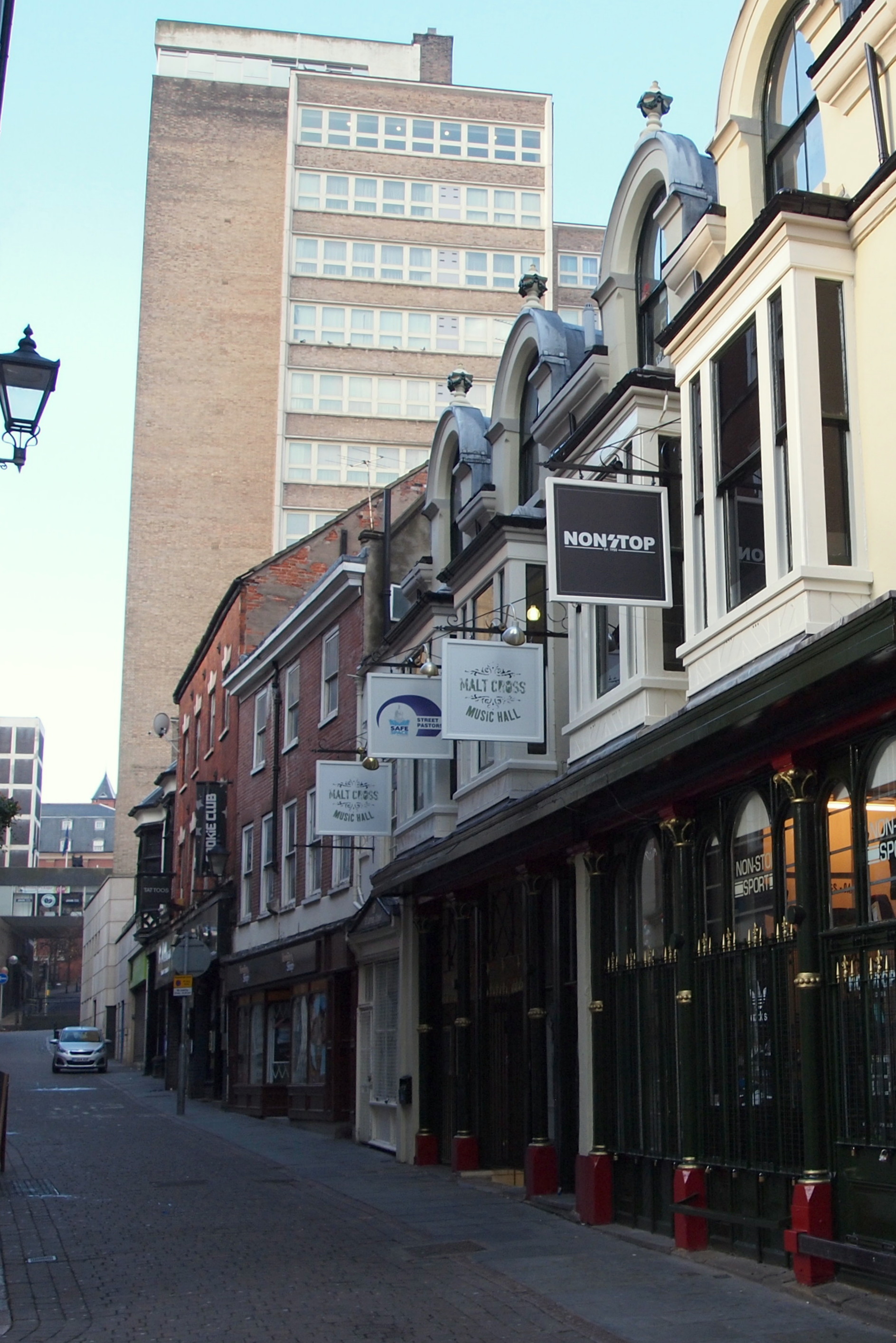Malt Cross on:
[Wikipedia]
[Google]
[Amazon]
 The Malt Cross is a building in
The Malt Cross is a building in
- A history of the Malt Cross, St James's Street
* ttps://web.archive.org/web/20081014111537/http://www.jdwetherspoon.co.uk/pubs/pub-details.php?PubNumber=1154 - link to the Roebuck Inn which has a small history section on this pub and the Malt Cross. {{coord, 52.9531, -1.1524, type:landmark_region:GB, display=title Buildings and structures in Nottingham Music hall venues in the United Kingdom Tourist attractions in Nottingham Theatres in Nottingham
 The Malt Cross is a building in
The Malt Cross is a building in Nottingham
Nottingham ( , locally ) is a city and unitary authority area in Nottinghamshire, East Midlands, England. It is located north-west of London, south-east of Sheffield and north-east of Birmingham. Nottingham has links to the legend of Robi ...
, England
England is a country that is part of the United Kingdom. It shares land borders with Wales to its west and Scotland to its north. The Irish Sea lies northwest and the Celtic Sea to the southwest. It is separated from continental Europe b ...
. It is situated on St James Street in Nottingham city centre
Nottingham city centre is the cultural, commercial, financial and historical heart of Nottingham, England. Nottingham's city centre represents the central area of the Greater Nottingham conurbation.
The centre of the city is usually defin ...
, off the Old Market Square
The Old Market Square (Slab Square) is an open, pedestrianised city square in Nottingham, England, forming the heart of the city, and covering an area of approximately , or about 3 acres. It is one of the largest paved squares in the United K ...
. The building was built in 1877 and is one of only a few Victorian music halls still standing. It was a café bar that hosted live music events until its closure on 18 July 2018.
On 15 August 2018 it was announced that the Malt Cross would re-open in September as a result of a new partnership between the existing trustees and the Nottinghamshire YMCA.
The building takes its name from a monument that used to be in the market square and was a gathering place for many people. William Howie Wylie noted that "John Nelson, a Yorkshire stonemason and one of Wesley's earliest followers, preached once in the market place and once at the Malt Cross."
History
In 1806 the former site of the Malt Cross monument was cleared, being recorded as: The Malt Cross was built in 1877. It had previously been an inn named the Roebuck but was bought by Mr Charles Weldon who rebuilt and enlarged the premises. Mr Charles Weldon only managed the music hall for a few years before the mortgage of £5,500 was foreclosed in 1880. It was then subject to a frequent change of management with Mr William Hulse taking the reins from 1883 – 1889, Mr E.F. Buxenstein for a year in 1891, Mr Arthur B. Johnson for a slightly lengthier period of 1893 – 1900, and then Mr Lewis Thompson Donkersley between 1902 - 1904.Architect
The man who designed the Malt Cross building as it is seen today was a Mr Edwin Hill.Young, A: "St James Street and the Potters House: A Brief History", p27, Potters House Trust, 1995 The most impressive part of his design was that of the high-arched glazed roof, the wooden arches of which are built from ten layers of laminated wood on the inner arches and twelve on the outer. This layered design allowed the beams to be bent to the required curve and did away with the usual difficulties of wooden arch design. The layers have no visible nail or bolt holes and it is thought that they are held together by glue alone.References
External links
- A history of the Malt Cross, St James's Street
* ttps://web.archive.org/web/20081014111537/http://www.jdwetherspoon.co.uk/pubs/pub-details.php?PubNumber=1154 - link to the Roebuck Inn which has a small history section on this pub and the Malt Cross. {{coord, 52.9531, -1.1524, type:landmark_region:GB, display=title Buildings and structures in Nottingham Music hall venues in the United Kingdom Tourist attractions in Nottingham Theatres in Nottingham